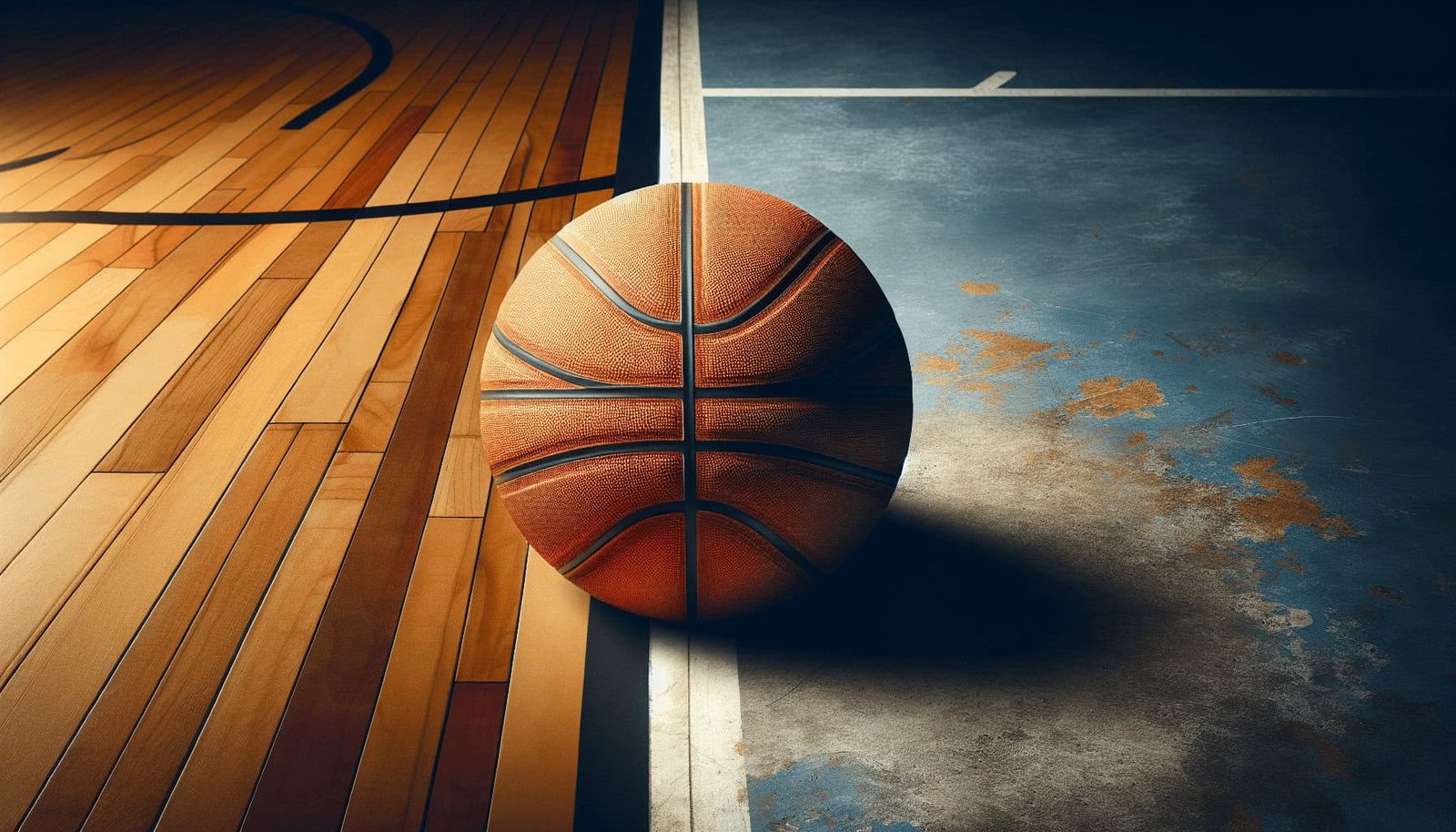Have you ever wondered why there are different basketballs for indoor and outdoor play? The sport’s essence remains the same, but the equipment used differs significantly. Knowing what those differences are can help you make better decisions for your game. Whether you’re a devoted basketball enthusiast or simply looking to understand more, let’s explore what sets these two types of basketballs apart.
Why Different Basketballs?
Basketball is a universal sport, enjoyed both indoors and outdoors. However, the playing conditions for each environment are quite different. While an indoor court might boast a polished wooden surface, outdoor courts can range from concrete to asphalt. These varying surfaces necessitate basketballs designed specifically for their intended environments.
Material Differences
One of the most noticeable differences between indoor and outdoor basketballs is the material they’re made from. This impacts not only the durability of the ball but also the feel and performance.
Indoor Basketballs
- Material: Premium leather or synthetic composites
- Feel: Softer and more comfortable
- Durability: Designed for smooth surfaces, less wear and tear
- Grip: Superior grip, better for controlled shots and dribbling
Outdoor Basketballs
- Material: Rubber or durable synthetic materials
- Feel: Rougher texture
- Durability: Built to withstand harsh surfaces like concrete and asphalt
- Grip: Often features deeper channels for better grip
Table Comparing Material and Durability
| Type | Material | Feel | Durability | Grip |
|---|---|---|---|---|
| Indoor | Premium leather or synthetics | Softer, more comfortable | Less wear and tear on smooth surfaces | Superior |
| Outdoor | Rubber or durable synthetics | Rougher texture | Built for harsh surfaces | Deeper channels |
Surface Interactions
The surface you play on affects the wear and grip of the basketball. While indoor courts are generally consistent, outdoor courts can vary greatly. This calls for basketballs that can handle a variety of surfaces and conditions.
Indoor Courts
Playing on indoor courts usually means dealing with a more controlled environment. The polished wooden surface is slippery, yet consistent, making the play more predictable.
Advantages:
- Consistent bounce: More predictable ball behavior
- Grip: No need for aggressive texture due to smooth surface
- Condition: Usually clean and well-maintained
Outdoor Courts
Outdoor courts bring their own set of challenges. They can vary from concrete to asphalt and may even have debris like pebbles or leaves. Hence, the basketball must be more rugged.
Advantages:
- Durable design: Can withstand rough surface and debris
- Versatility: Suitable for a variety of outdoor conditions
- Weather-resistant: Built to last under different weather conditions
Table Comparing Surface Interactions
| Feature | Indoor Courts (Wooden) | Outdoor Courts (Concrete/Asphalt) |
|---|---|---|
| Consistency | High | Varies – can be unpredictable |
| Maintenance | High – usually clean and polished | Low – often debris like pebbles, leaves |
| Bounce | Predictable | Variable – impacted by surface imperfection |
| Suitability | Softer ball | Rugged, durable ball |

Design Elements
Beyond materials and surface interactions, the design elements of indoor and outdoor basketballs also differ to offer optimized performance in their respective environments.
Channels and Grooves
The channels and grooves of a basketball affect grip and control. Both indoor and outdoor balls have channels, but their depth and width vary.
Indoor Basketballs
- Shallower Channels: Better for smooth surfaces
- Fine Grooves: For enhanced control and precision
Outdoor Basketballs
- Deeper Channels: Improved grip on rough surfaces
- Pronounced Grooves: For better handling in diverse conditions
Air Retention
Air retention is crucial for maintaining optimal bounce. While both ball types need good air retention, the demands for each vary.
Indoor Basketballs
- High-Quality Bladders: Often made of butyl for better air retention
- Less Frequent Inflation: Given the controlled environment
Outdoor Basketballs
- Durable Bladders: Often made of rubber
- Regular Inflation Needed: Due to harsher conditions and higher wear
Table Comparing Design Elements
| Aspect | Indoor Basketballs | Outdoor Basketballs |
|---|---|---|
| Channels and Grooves | Shallower channels, fine grooves | Deeper channels, pronounced grooves |
| Air Retention | High-quality bladders, less inflation needed | Durable bladders, regular inflation needed |
Performance Factors
The different design and material choices directly impact how each type of basketball performs, both in terms of gameplay and longevity.
Indoor Basketballs
- Control and Precision: Enhanced for better gameplay
- Feel: Softer for more comfortable handling
- Consistency: More predictable bounce and trajectory
Outdoor Basketballs
- Durability: Built to last longer despite harsher conditions
- Grip: Improved for better handling on rough surfaces
- Versatility: Can be used in various outdoor settings

Long-Term Considerations
Choosing the right basketball isn’t just about immediate performance; it’s also about how long the ball will last under regular use. Let’s go over some long-term considerations.
Maintenance Needs
Basketballs require different levels of maintenance depending on their design and intended use.
Indoor Basketballs
- Maintenance: Minimal – regular cleaning to keep the surface in good condition
- Storage: Should be kept in temperature-controlled environments to preserve material
Outdoor Basketballs
- Maintenance: Moderate – regular checks for air pressure and surface cleaning
- Storage: Can be stored in less controlled environments but should be protected from extreme conditions for longevity
Cost Implications
The costs associated with indoor versus outdoor basketballs can be significantly different. This is because of the varying materials used and the durability expected.
Indoor Basketballs
- Initial Cost: Higher due to premium materials like leather
- Longevity: Can be high if used under the right conditions
Outdoor Basketballs
- Initial Cost: Lower, generally more affordable
- Longevity: Reasonably high, though they may need replacing more often due to tougher conditions
Table Comparing Cost Implications
| Factor | Indoor Basketballs | Outdoor Basketballs |
|---|---|---|
| Initial Cost | Higher (premium materials) | Lower (durable rubber) |
| Longevity | High (if used correctly) | Moderate |

Choosing the Right Basketball
With a clear understanding of the differences between indoor and outdoor basketballs, how do you choose the right one for your needs? Consider your playing environment, frequency, and personal preferences.
Player Type
Recreational Player
- Recommendation: Multi-purpose basketballs designed for both indoor and outdoor use.
Competitive Player
- Recommendation: Invest in specialized basketballs for indoor or outdoor play depending on where you train and compete most often.
Frequency of Play
Occasional Play
- Recommendation: Outdoor basketballs are usually more affordable and versatile for infrequent use.
Regular Play
- Recommendation: Invest in higher-quality basketballs suited to your primary playing environment to get the best performance and durability.
Personal Preference
Your personal preference in terms of how a basketball feels and handles can also play a significant role in your choice.
Preference for Soft Feel
- Recommendation: Indoor basketballs offer a softer feel and better handling.
Preference for Durability
- Recommendation: Outdoor basketballs are rugged and can handle varied conditions better.
Conclusion
Differences between indoor and outdoor basketballs go beyond mere aesthetics. From the materials used, their design elements, to their performance, each type of basketball is optimized for its intended playing environment. Whether you’re playing on a polished indoor court or a rugged outdoor one, selecting the right basketball can significantly improve your game experience. Knowledge of these differences allows you to make an informed choice, enhancing your skills and enjoyment on the court.

